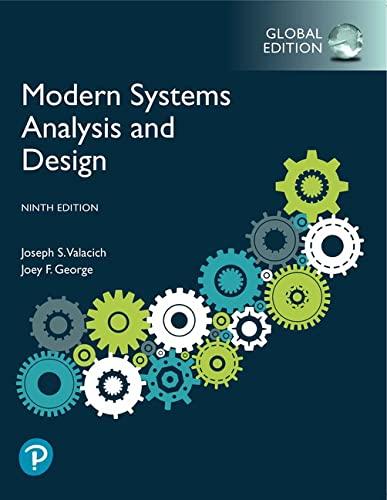Match each of the key terms above with the definition that best fits it. Conceptual data model
Question:
Match each of the key terms above with the definition that best fits it.
Conceptual data model
____A detailed model that captures the overall structure of organizational data and is independent of any database management system or other implementation considerations.
____A detailed, logical representation of the entities, associations, and data elements for an organization or business area.
____A graphical representation of an E-R model.
____A collection of entities that share common properties orcharacteristics.
____A single occurrence of an entity type.
____A named property or characteristic of an entity that is of interest to the organization.
____An attribute (or combination of attributes) that uniquely identifies each instance of an entity type.
____A candidate key that has been selected as the unique, identifying characteristic for an entity type.
____An attribute that may take on more than one value for each entity instance.
____A set of two or more multivalued attributes that are logically related.
____An association between the instances of one or more entity types that is of interest to the organization.
____The number of entity types that participate in a relationship.
____A relationship between the instances of one entity type.
____A relationship between instances of two entity types.
____A simultaneous relationship among instances of three entity types.
____The number of instances of entity B that can (or must) be associated with each instance of entity A.
____An entity type that associates the instances of one or more entity types and contains attributes that are peculiar to the relationship between those entity instances.
____A subgrouping of the entities in an entity type that is meaningful to the organization.
____A generic entity type that has a relationship with one or more subtypes.
____Specifies that each entity instance of the supertype must be a member of some subtype in the relationship.
____Specifies that an entity instance of the supertype does not have to belong to any subtype.
____Specifies that if an entity instance of the supertype is a member of one subtype, it cannot simultaneously be a member of any other subtype.
____Specifies that an entity instance can simultaneously be a member of two (or more) subtypes.
____Specifications that preserve the integrity of the logical data model.
____The set of all data types and values that an attribute can assume.
____An assertion or rule that governs the validity of data manipulation operations such as insert, update, and delete.
____An attribute that must have a value for every entity instance.
____An attribute that may not have a value for every entity instance.
____An attribute that has meaningful component parts.
____An attribute whose value can be computed from related attribute values.
Step by Step Answer:

Modern Systems Analysis And Design
ISBN: 9781292351629
9th Global Edition
Authors: Joe Valacich, Joey George





